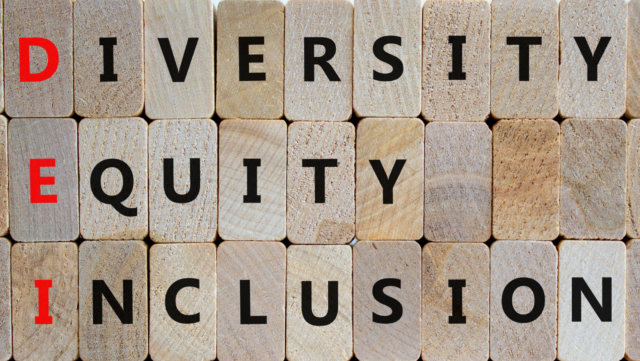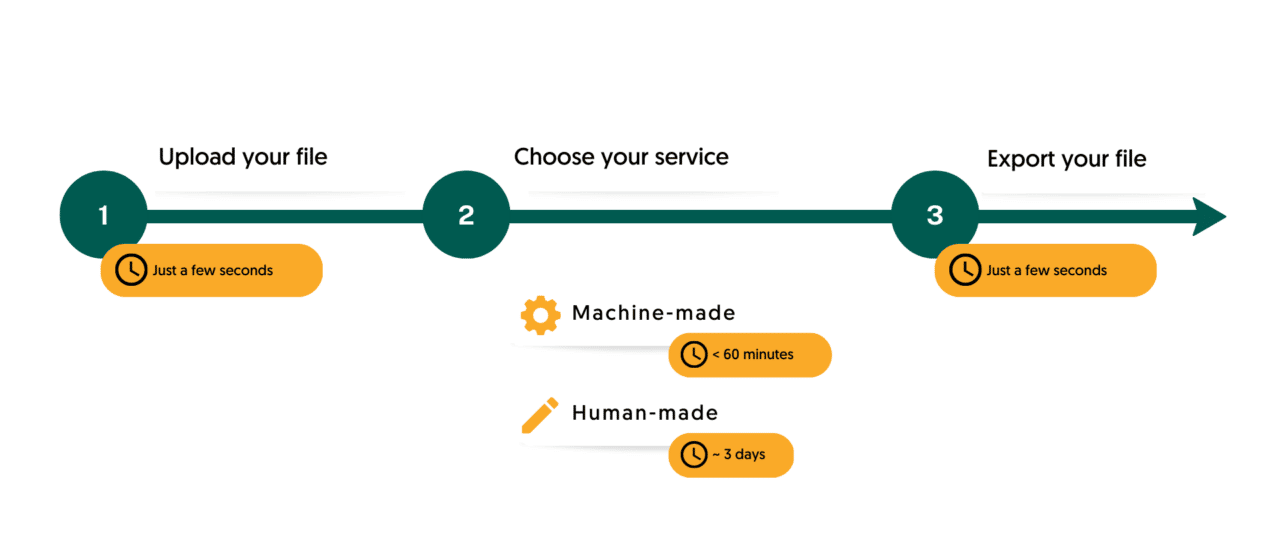The issue of language barriers in higher education is a topic that is becoming more and more important in today’s globalized world. As universities continue to attract diverse student populations from all over the world, it becomes crucial for institutions to address the challenges that come with such diversity. A major challenge that universities face is bridging the language gap between students and faculty members. This barrier not only affects international students but also non-native English speakers within the same country. In this blog, we will explore how universities are utilizing technology such as subtitles and transcriptions to overcome language barriers and create a more inclusive learning environment.
Table of contents
- Language Barriers In Education Today
- Subtitles and Transcription in Education
- Enhancing Learning Experience through Subtitles
- Transcription as a Tool for Academic Inclusivity
- Practical Applications in Diverse University Settings
- Overcoming Challenges and Implementing Solutions
- How Amberscript Can Assist Universities
- The Future of Educational Technology
Language Barriers In Education Today
Accessibility and inclusivity are crucial elements of a successful university. By creating an inclusive learning environment, universities can provide equal opportunities for all students to excel. This not only benefits the student body but also the institution as a whole in terms of diversity and global perspectives. With technology advancements, it has become easier for universities to ensure accessibility and inclusivity for all students, including those with language barriers. This not only helps students understand the course material better but also promotes a more diverse and accepting campus culture.

Subtitles and transcriptions have been traditionally used to aid individuals with hearing impairments, but their benefits go beyond that. These tools have now become essential for bridging language gaps in higher education. With the help of subtitles and transcriptions, universities can provide a more inclusive learning experience for all students, regardless of their native language or level of proficiency in the course language. Let’s explore how universities are leveraging these technologies to create a more accessible and inclusive learning environment.
Subtitles and Transcriptions in Education
Subtitles and transcriptions are both tools used to make audio or video content more accessible. Subtitles refer to written text displayed on-screen that corresponds with the spoken dialogue, while transcriptions are a written record of what is said in an audio or video recording. The main difference between the two is that subtitles are specifically timed to appear on screen during the corresponding audio, while transcriptions are a full written record of the spoken content.
These technologies have evolved significantly in educational settings over the years. Initially, subtitles were used mainly for foreign language films or shows, but now they are being utilized for educational videos and lectures as well. Similarly, transcriptions were primarily used for recording legal proceedings or interviews, but they are now being incorporated into online learning platforms to enhance accessibility.

Transcription Services for Universities: Enhancing Accessibility, Learning, and Research
Read the BlogThe need for accessible content in universities is evident, with the growing diversity of students on campuses. In the US alone, there are over one million international students and countless non-native English speakers enrolled in higher education.
Therefore it has now become crucial to provide solutions for individuals with language barriers, and subtitles and transcriptions have become essential tools to achieve this goal.
Enhancing Learning Experiences through Subtitles
For non-native speakers, subtitled lectures and videos can significantly improve their comprehension of course material. By having the spoken dialogue displayed on screen, students can better understand the content as they read along. This is especially helpful for individuals with lower proficiency in the course language.
Moreover, subtitles also facilitate language learning and bilingual education. By providing subtitles in both the native and target languages, universities can assist students in expanding their language skills. This not only benefits international students but also non-native speakers who are looking to improve their proficiency.
Several universities have successfully implemented subtitled content in their courses and have seen positive results. For instance, the University of Iowa has incorporated subtitled lectures for their foreign language courses, resulting in improved student understanding and retention of course material. Similarly, the University of Nottingham has seen success with providing subtitles in both English and Mandarin for their business courses, catering to their diverse student population from China.
Transcriptions as a Tool for Academic Inclusivity
For students with hearing impairments, transcriptions can be transformative, enabling equal access to educational content. The transcription of lectures, seminars, or other academic events means that these students won’t miss out on critical information. It allows them to engage with the material on their own terms, at their own pace, and revisit complex points, making the learning process less stressful and more effective. Besides, having access to transcribed course content can positively impact their note-taking skills, as they can focus on understanding and processing the information rather than rushing to write down every word. By combining transcriptions with other assistive technologies, universities can foster an inclusive learning environment that respects and supports the needs of students with hearing impairments.
Additionally, transcriptions can also be used for research interviews and academic presentations. These tools can assist any kind of students in taking thorough notes and understanding complex concepts better. For individuals with learning difficulties such as dyslexia, transcriptions can be a game-changer in their academic journey.
Some universities have embraced transcriptions as part of their commitment to inclusive education. The University of California, Berkeley provides real-time transcription services for students with hearing impairments, facilitating their participation in lectures and discussions. Similarly, the University of Leeds has a dedicated team that provides transcription services for students with diverse learning needs. These examples show how universities are actively utilizing transcriptions to create a more inclusive learning environment.
Practical Applications in Diverse University Settings
Universities around the globe are breaking down linguistic barriers in international webinars and guest lectures by using subtitles. When speakers and attendees come from various linguistic backgrounds, subtitles can act as a universal language that brings everyone onto the same page. They are a powerful tool that ensures everyone can participate fully and derive the maximum benefit from these academic events, regardless of their language proficiency.
Online courses and MOOCs often attract a diverse, expansive audience, creating the need for universal accessibility. Transcriptions of lecture materials serve this purpose, providing an accessible format that can be understood by non-native English speakers and individuals with hearing impairment. Additionally, the advantage of self-paced learning is amplified by transcriptions, as learners can revisit and digest complex information at their comfort, enhancing the learning experience and overall comprehension.
Multilingual support in the form of subtitles and transcriptions can significantly improve the efficiency and inclusivity of group projects and discussions in a multicultural academic environment. A subtitled presentation can help students learn their second language, ensuring effective communication and comprehensive understanding. Moreover, transcriptions of group discussions allow students to capture every detail of the conversation, revisit the discussion, and clarify any misunderstandings. These practices foster an inclusive environment in education, where everyone can contribute equally and collaborate effectively.
Overcoming Challenges and Implementing Solutions
While subtitles and transcriptions play a crucial role in ensuring inclusivity and global accessibility, ensuring their accuracy and timeliness poses a considerable challenge. Misinterpreted words or phrases can alter the meaning of the content, leading to misunderstandings. To mitigate this, universities can leverage advanced speech recognition technologies and AI to generate accurate subtitles and transcriptions in real-time. Periodic reviews and edits by human moderators can further enhance the precision of the content, ensuring a seamless academic experience for all students.
Translating educational content is not just about word-for-word conversion; it also involves capturing the cultural and contextual nuances to maintain the essence of the original message. This can be challenging when catering to an international audience with diverse cultural backgrounds. To tackle this, universities can employ skilled translators who understand the cultural context and can translate academic content while preserving its original intent and meaning. Further, employing localization techniques can help institutions adapt the content to suit the cultural and linguistic preferences of their global student body.
For successful integration of these technologies, universities need to adopt a strategic and systematic approach. Firstly, assessing the needs and challenges of their diverse student population can help universities identify the areas where subtitles and transcriptions are most required. Secondly, incorporating regular training for faculty and staff on using these technologies can ensure their optimal utilization. Lastly, a continuous evaluation process to review the effectiveness and accuracy of the subtitles and transcriptions will ensure that these tools meet their objective of promoting inclusivity and global accessibility.
How Amberscript Can Assist Universities
Amberscript is at the forefront of providing advanced speech recognition technology that aids in making educational content more accessible. Our services are tailored to meet the distinct needs of universities, ensuring a more inclusive academic environment.
Amberscript offers a range of solutions specifically designed for educational institutions. Among these are automatic and manual transcription services, automatic and human-made subtitling, as well as translation services. These tools aid in the creation of accessible content for online courses, webinars, group discussions, and more, ensuring every student has equal opportunities for academic success.
AI-driven speech recognition technology is especially useful to generate accurate subtitles and transcriptions in real-time. This technology is capable of capturing and converting spoken language into written words with remarkable precision. Additionally, human-made services are also available, where transcriptions and subtitles are reviewed and edited by skilled professionals, ensuring ultimate accuracy and context preservation.

Numerous universities have benefited from Amberscript’s solutions. For instance, Maastricht University in the Netherlands has been using Amberscript’s services to transcribe their lectures and seminars, making them accessible to a wider student population. Moreover, the University College London employed Amberscript’s automatic subtitling service for their online course materials, improving accessibility and comprehension for international students and those with hearing impairments.
Universities seeking to enhance their language accessibility can partner with Amberscript to benefit from their industry-leading solutions. The partnership process is simple and collaborative, involving an initial consultation to understand the university’s specific needs, followed by the deployment of tailored services. Amberscript’s dedicated customer support ensures a seamless implementation process and continuous assistance for optimal utilization of their services. Through this partnership, universities can significantly improve their language accessibility, fostering an inclusive and globally accessible academic environment.
The Future of Educational Technology
As we look to the future, educational technology continues to evolve at an impressive pace. Universities must stay abreast of these advancements to provide inclusive, accessible, and high-quality education to their students.
Emerging trends include real-time subtitles and transcriptions, which allow instant conversion of spoken words into written form during live lectures or webinars. There’s also the potential for biometric voice recognition, where the technology would recognise and adapt to individual speakers, resulting in a more personalised and accurate transcription. These technologies are becoming more sophisticated and accurate, providing immense potential to make education more accessible and engaging.
Artificial Intelligence (AI) and Machine Learning (ML) have a profound impact on language accessibility. AI-driven software can learn and adapt to different dialects, accents, and speech patterns, enhancing the accuracy of translations, subtitles, and transcriptions. Additionally, ML algorithms can understand context, detect errors, and make corrections, providing precise and high-quality content. These technologies are continuously learning and improving, promising a future where language barriers in education become obsolete.
To stay ahead, universities must foster a culture of innovation and open-mindedness towards technology. Encouraging faculty and staff to embrace these technologies and providing them with the necessary training is vital. Universities should also establish partnerships with tech companies like Amberscript to leverage their expertise and innovative solutions. Regular evaluation of the effectiveness of these technologies and seeking feedback from students and faculty can ensure they are meeting their objectives. Proactively seeking out and investing in emerging technologies in their nascent stages can also give universities a competitive edge. In this rapidly evolving landscape, those who are forward-thinking and adaptive will lead the way in providing globally accessible and inclusive education.
